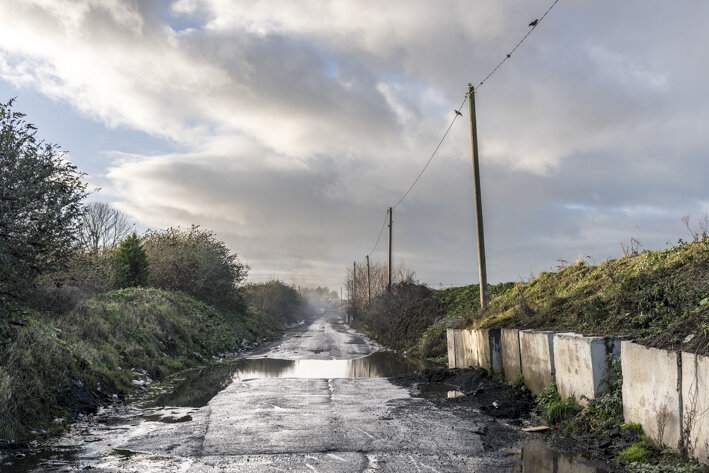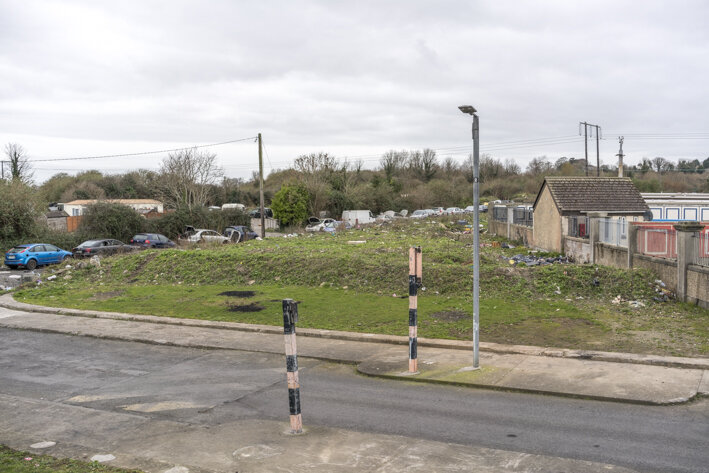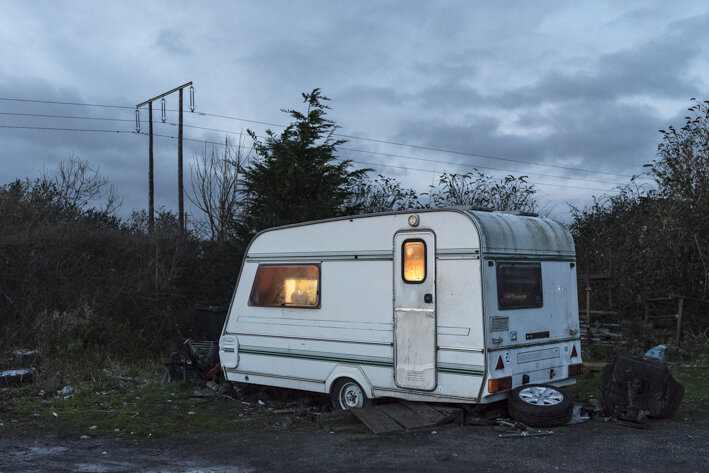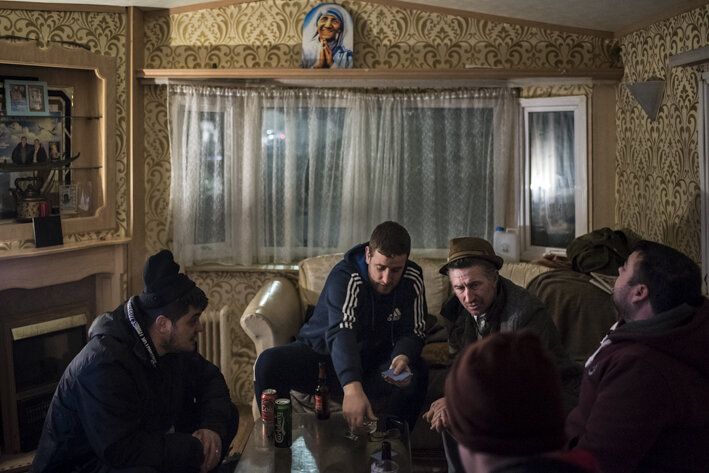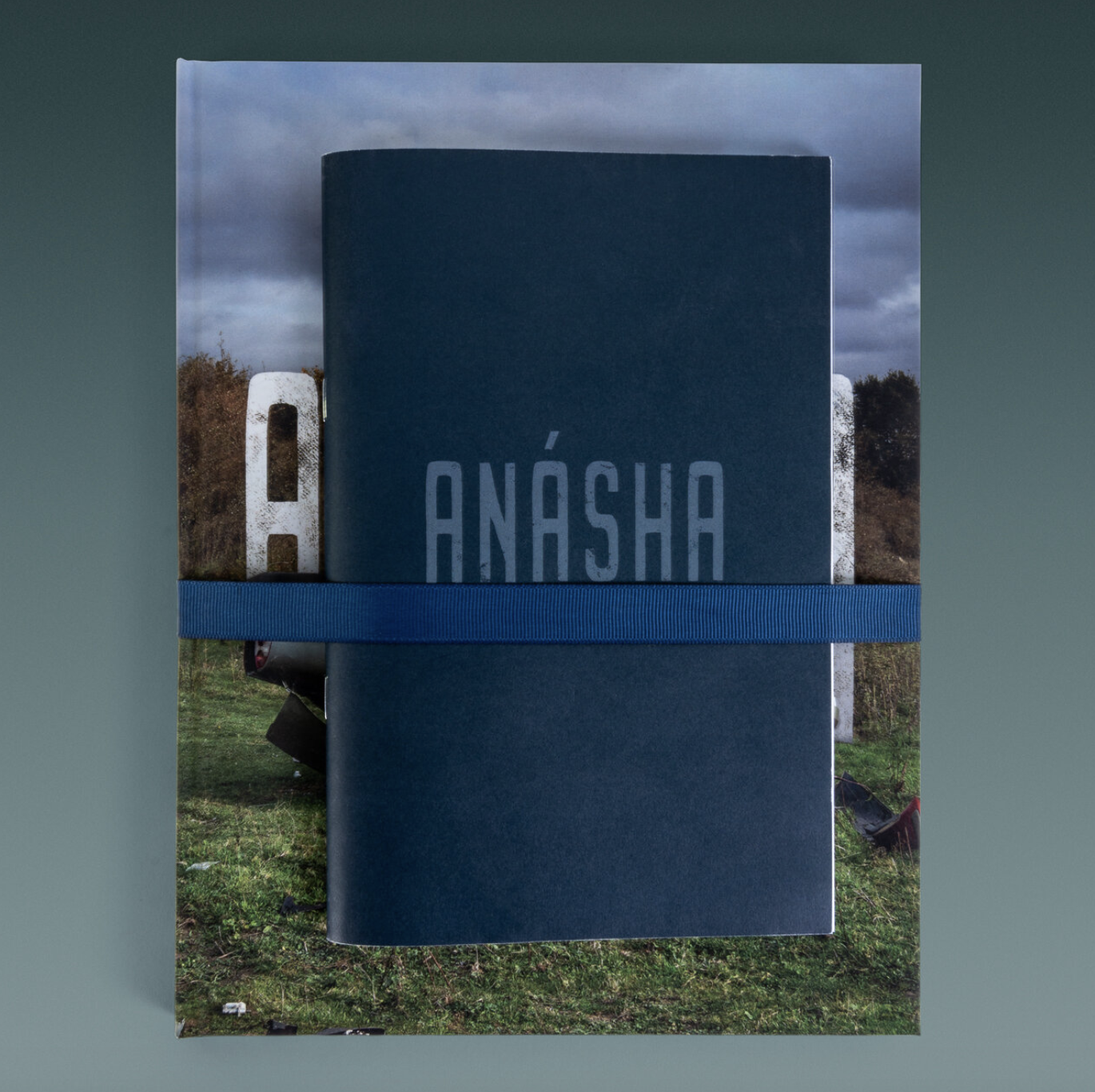ANÁSHA - INTERVIEW WITH SEBASTIAAN FRANCO
Author LINDA ZHENGOVÁ
Artist SEBASTIAAN FRANCO
Website sebastiaanfranco.com
Instagram @sebastiaan.franco
Sebastiaan Franco is a Master graduate of the Royal Academy of Fine Arts in Ghent, Belgium. Inspired by the New Journalism, his work centres on the fine line between those on the margins of society and those that are considered non-existent to society becoming a mix between classic documentary and visual anthropology. Working with the principle of 'slow journalism' he spends a lot of time with certain people, from a few months up to a few years trying to experience and witness first-hand what life is like for the communities he documents.
In ‘Anásha’, Franco spent two years living with a Traveller family on their site in Finglas on the outskirts of Dublin. After spending a large amount of time with them, they gradually welcomed him into their community as one of them.
In an interview with GUP, Franco reflects on his time with the Traveller family and his series which was additionally turned into a photobook.
What is the meaning of the word ‘Anásha’?
Anásha has different meanings depending on who you ask. Seeing as it came from Gammon, the Traveller’s cant which isn’t an official language, its meaning is pretty ambiguous. Though most people know the word when they hear it and it works like a trigger of some sort. When you hear it, you know to pay attention to what’s going on, so if you really need an exact translation you could say it roughly means ‘pay attention’. It’s used in conversations, on site or when you want to point something out and stay subtle.
What made you decide to work on the topic of Traveller families in Ireland and move into one for two years?
Basically, I was looking for a subject and couldn’t find anything I was willing to invest all my time. Then one night the idea just came up and I ran with it straightaway. I was interested in this nomadic culture that originated in Western Europe. Although it does remind us of Romanian gypsies, they have absolutely nothing to do with each other and people tend to find that hard to believe. So, I kind of set out to delve into this part of Irish culture that a lot of people either know very little or nothing about. But I always loved Ireland as well so that was also a bonus and an excuse for me to head back to Ireland after not having been there for over 15 years. I had two years to finish the project so I figured I might as well just fully commit myself for the time and push things as far as possible. I do believe that if you want to comprehend a subject entirely, you have to be as close as possible.
How do you reflect on the time spent there now? Did the whole journey allow you to grow as a photographer?
I have a lot of fond memories and I reminisce about my time there often. I do try and go back for a visit when I get a chance because I like to think I made some genuine friends over there. And somehow, I believe I can still add to this project, even though there’s a book out, it still feels as if I might be able to do just a bit more.
Obviously, you grow with every project you undertake but this specific project helped me find my voice a bit more. However, I’m still searching. The whole process of gaining acceptance within a community where I absolutely do not belong is something that I really enjoy doing, even though it is the hardest part in every project I’ve ever done. Covering this kind of subject did make me realize I’m not a photographer who wants to create a body of work that’s considered as relevant in today’s news. With all due respect to the people covering global issues, I’m not a saviour with a camera and I don’t want to be one either. What I’m interested in are the down-and-outs of society, the subjects that are overlooked or unseen because they have little value in the news. But that’s something I realized working on this subject and I feel that’s the way forward for me personally. So, I like to think I grew as both a photographer and a person, at least in one way or another.
Your series also turned into a photobook. How did you find the process of making it and what would you say is its function?
To be completely honest, the process of turning a body of work into a book is something I really dread. I always start a project with the idea of doing a book or some kind of publication, but when push comes to shove, I really don’t enjoy any of it. I get my energy from being out in the field, collecting stories, hearing and seeing things and just capturing life as it unfolds. Sitting down, editing, sequencing and making a finished project just feels draining sometimes. Maybe that’s because I don’t have the right attitude to be doing something like that, or I’m just this man-child that needs constant impulses to stay interested. But in the end, I did make a project and the way to present it to people is a publication; so, it has to be done.
I also didn’t have a clear goal making the book, I might be telling you something that you already know, but I’m presenting you with a story and you can take from it whatever you want. You might learn something, see something you never knew existed, see things in a different perspective. I’d say the function of the book is mainly to take your hand and guide you through a story that I experienced and would like to share. Cliché as that may sound.
You can purchase Franco’s publication Anásha here.
You can meet Franco's work and other 99 great photography talents on FRESH EYES book.



